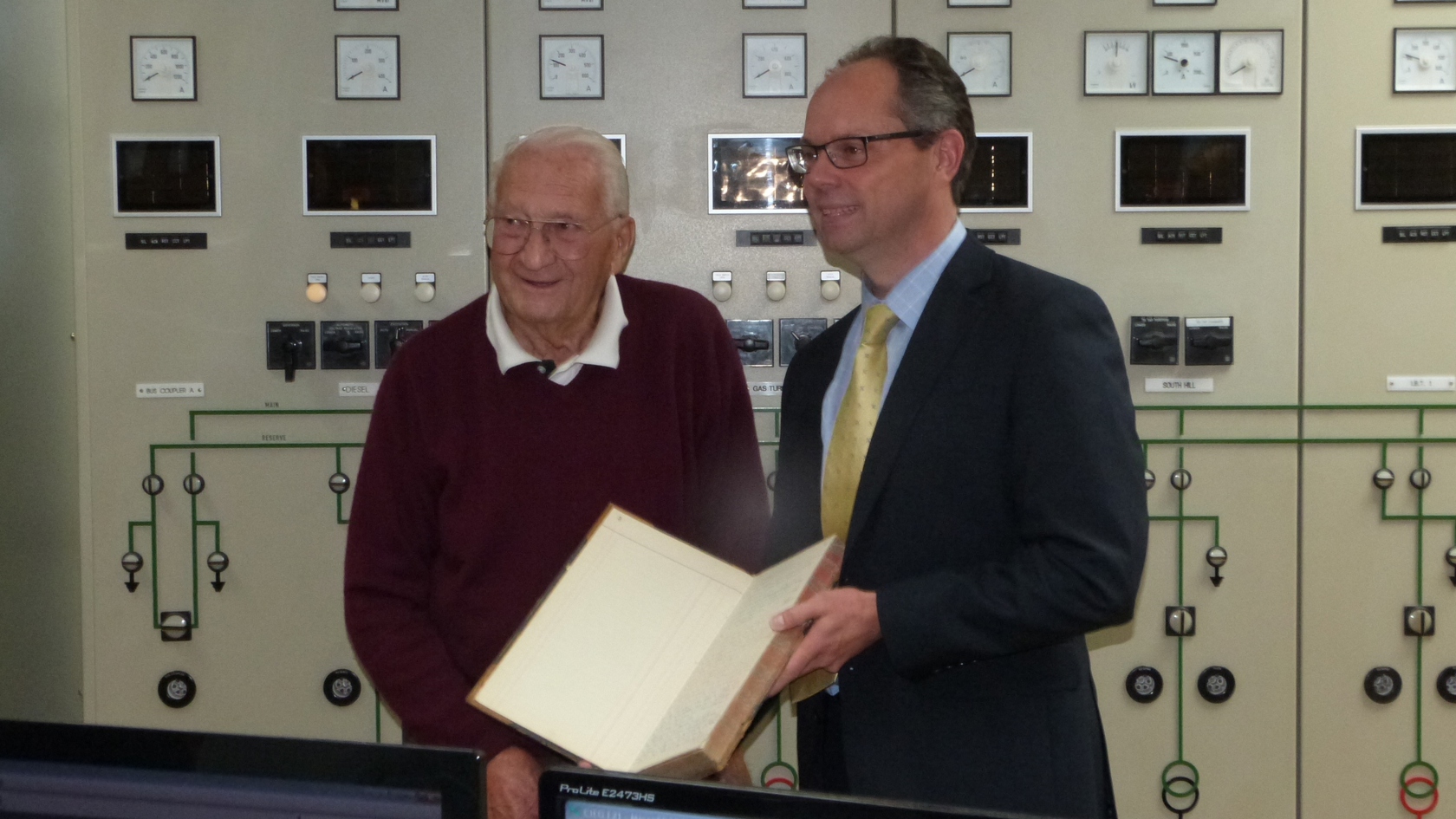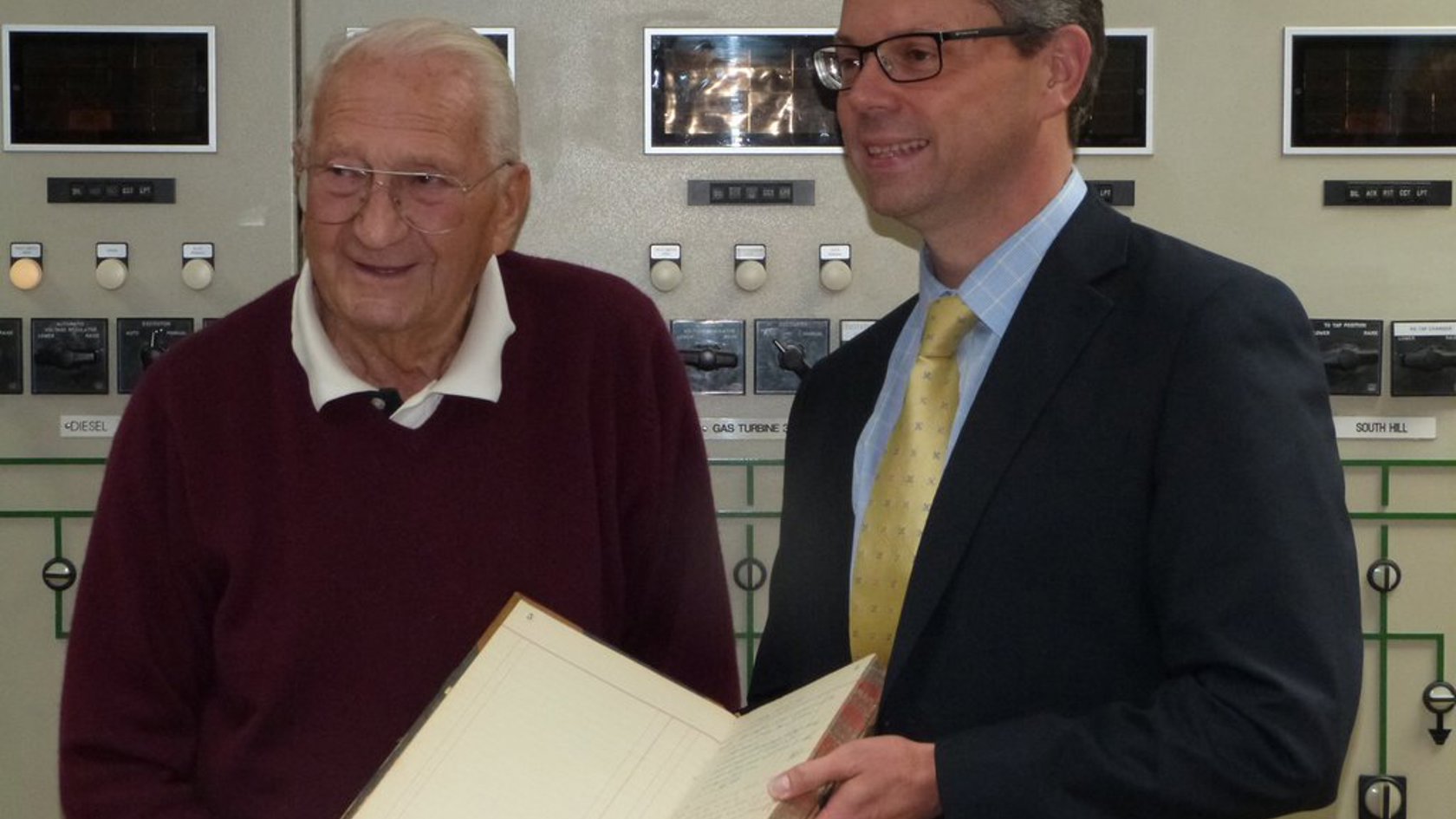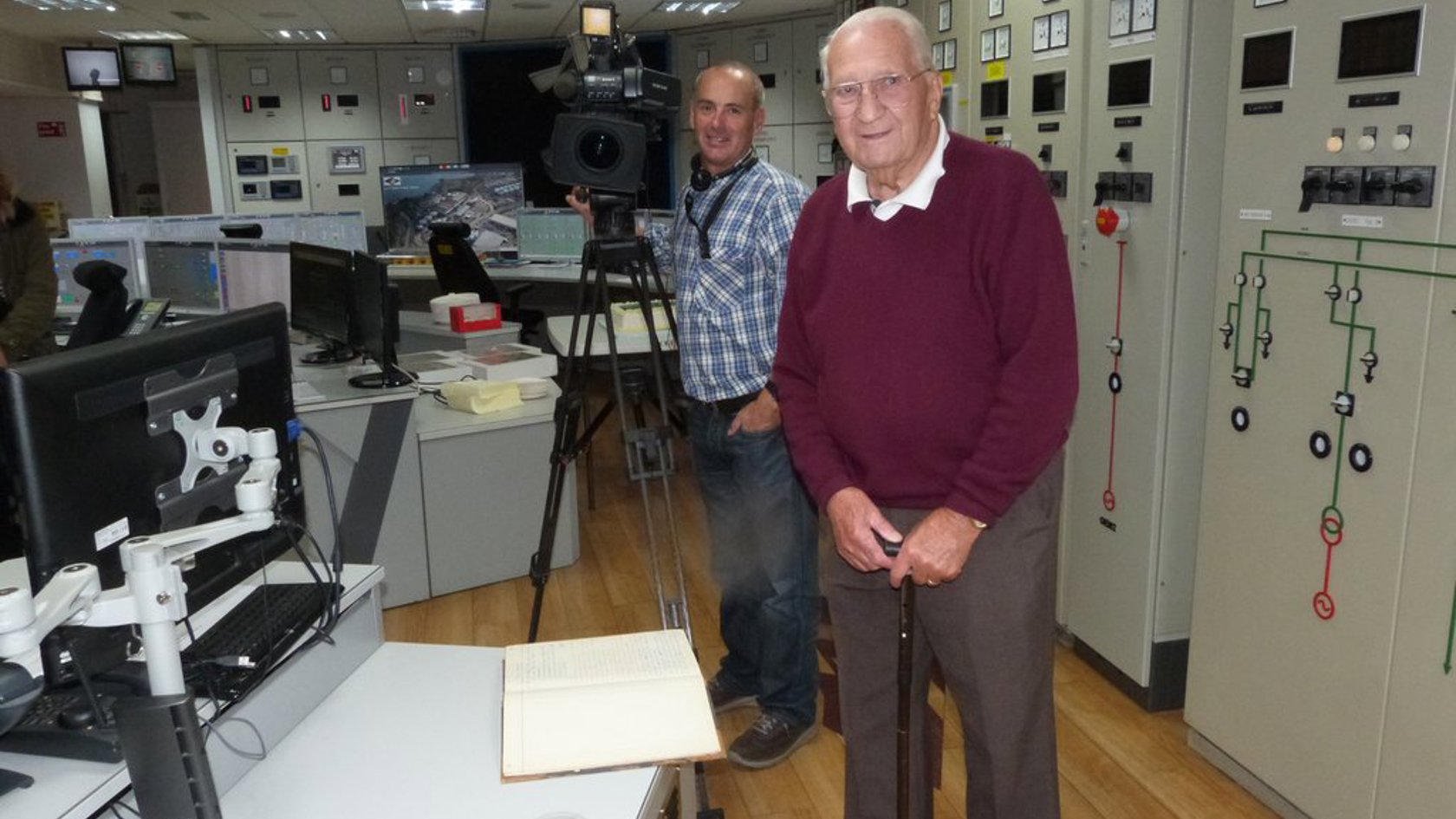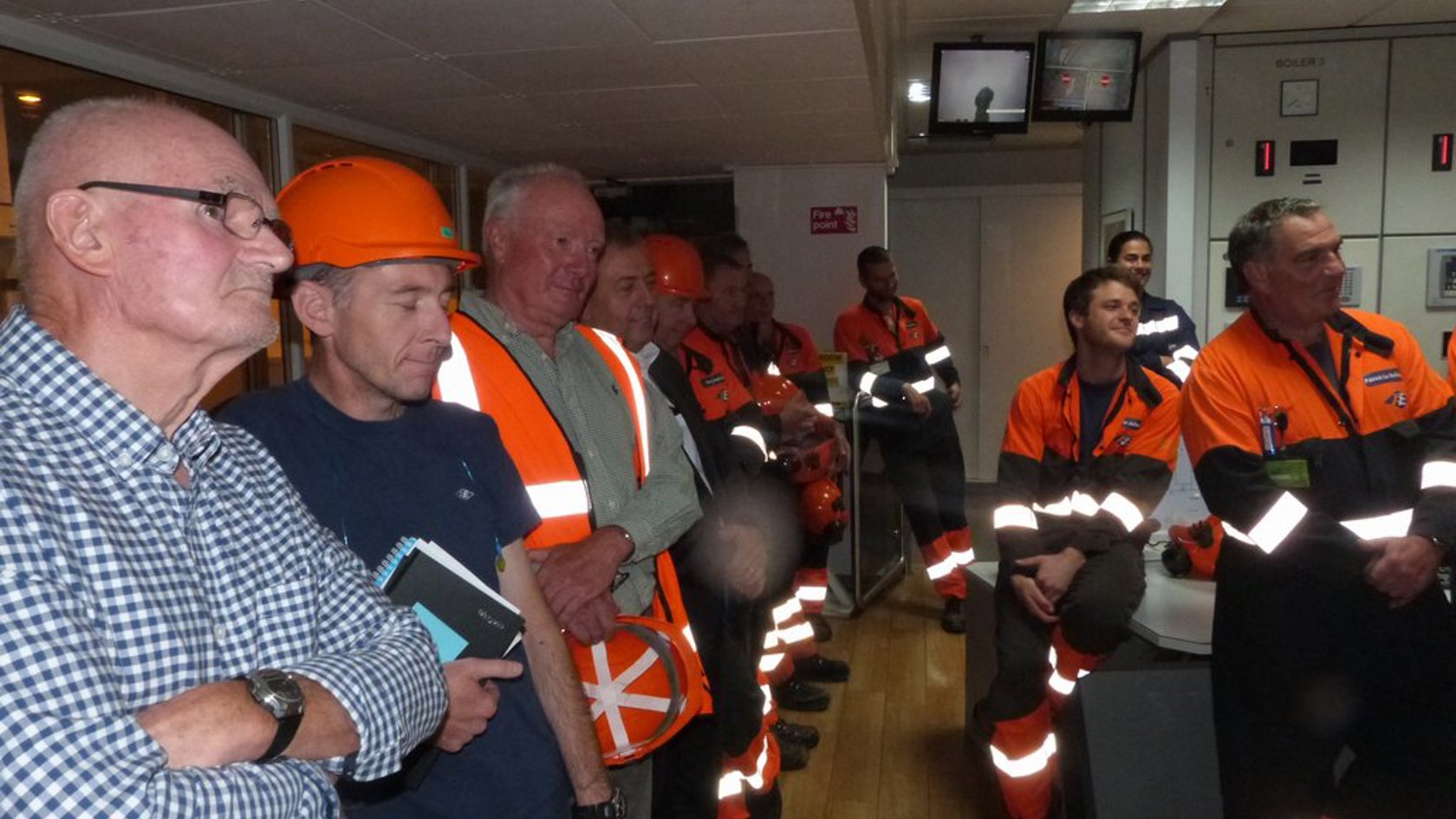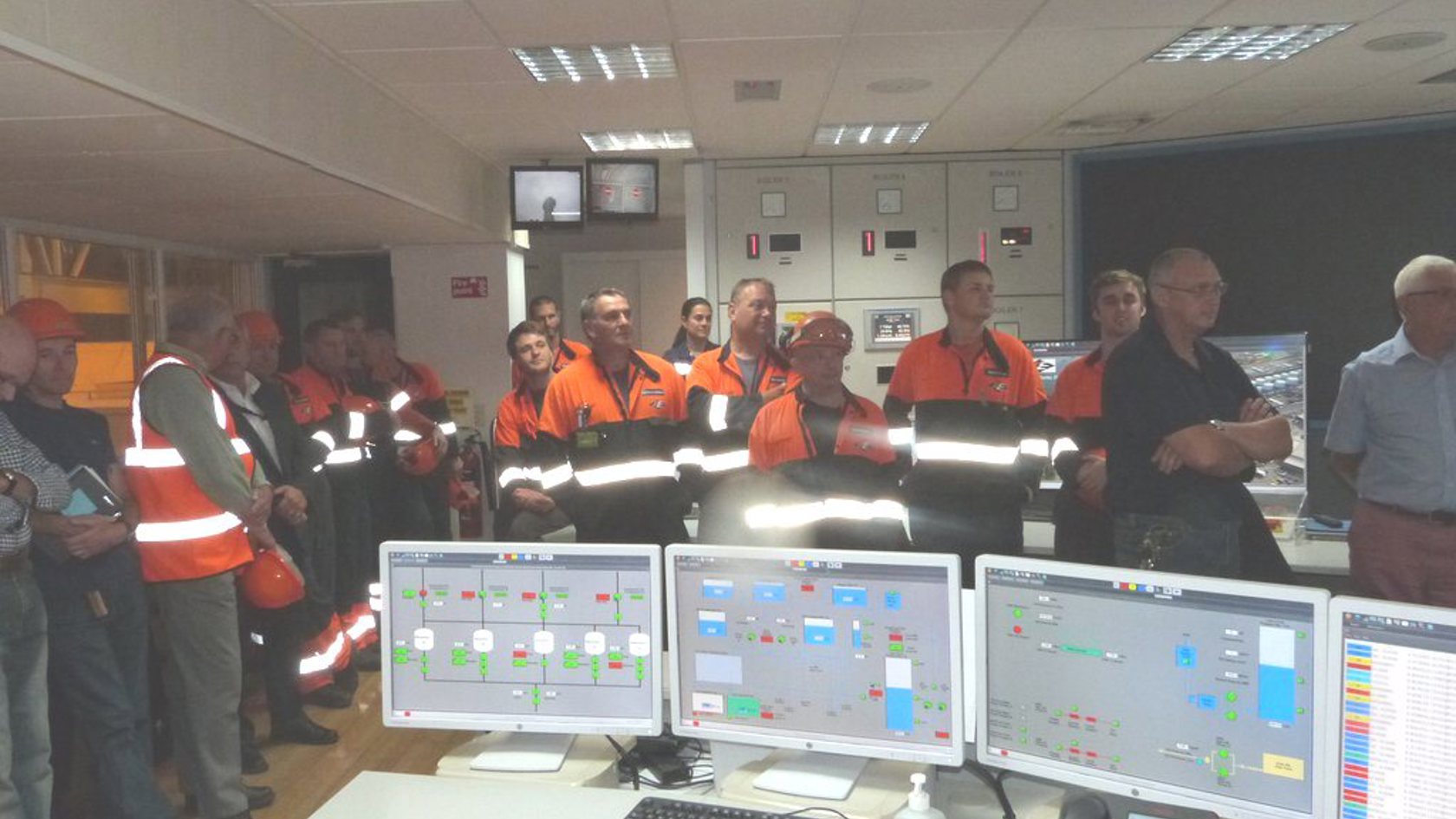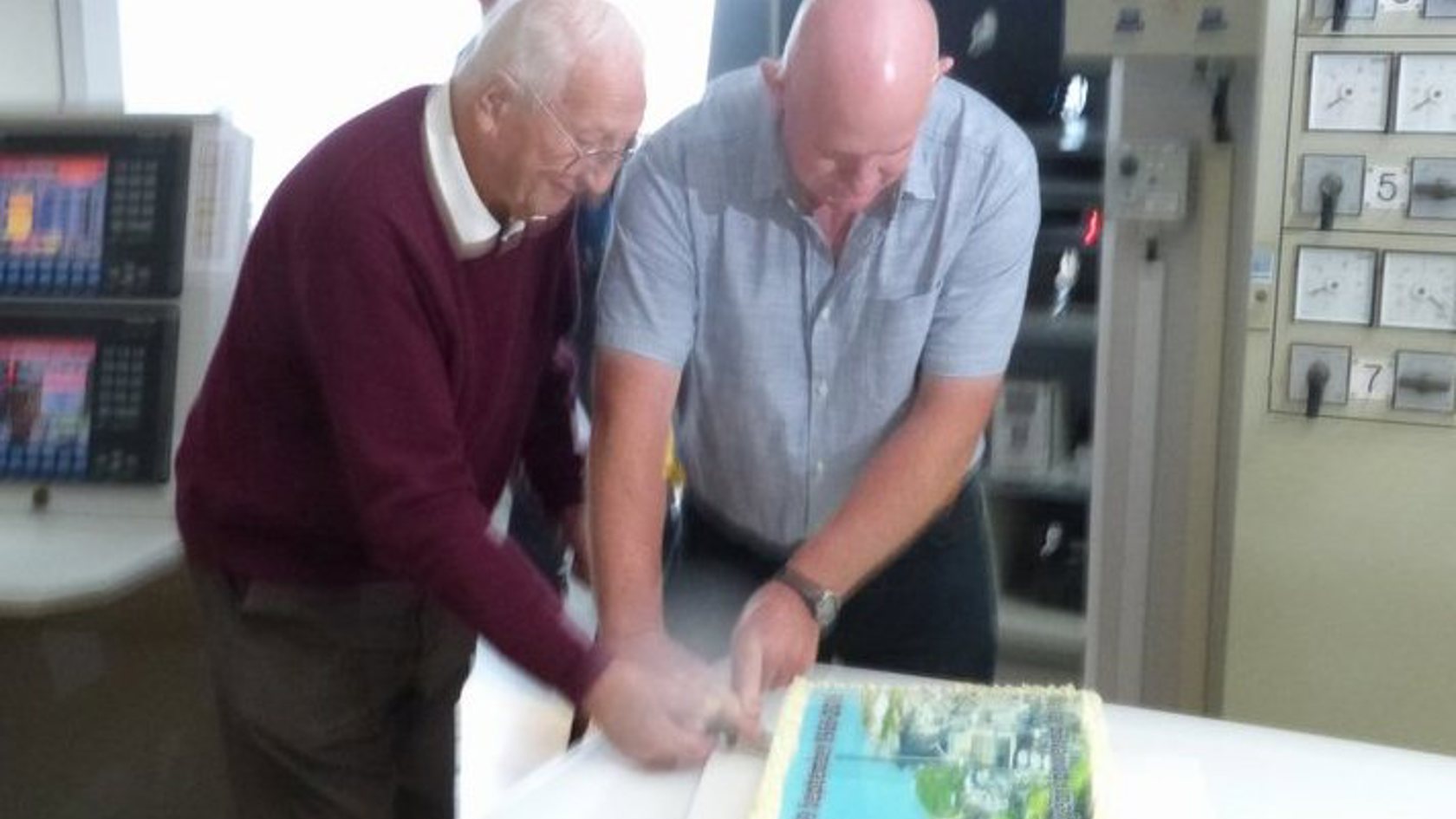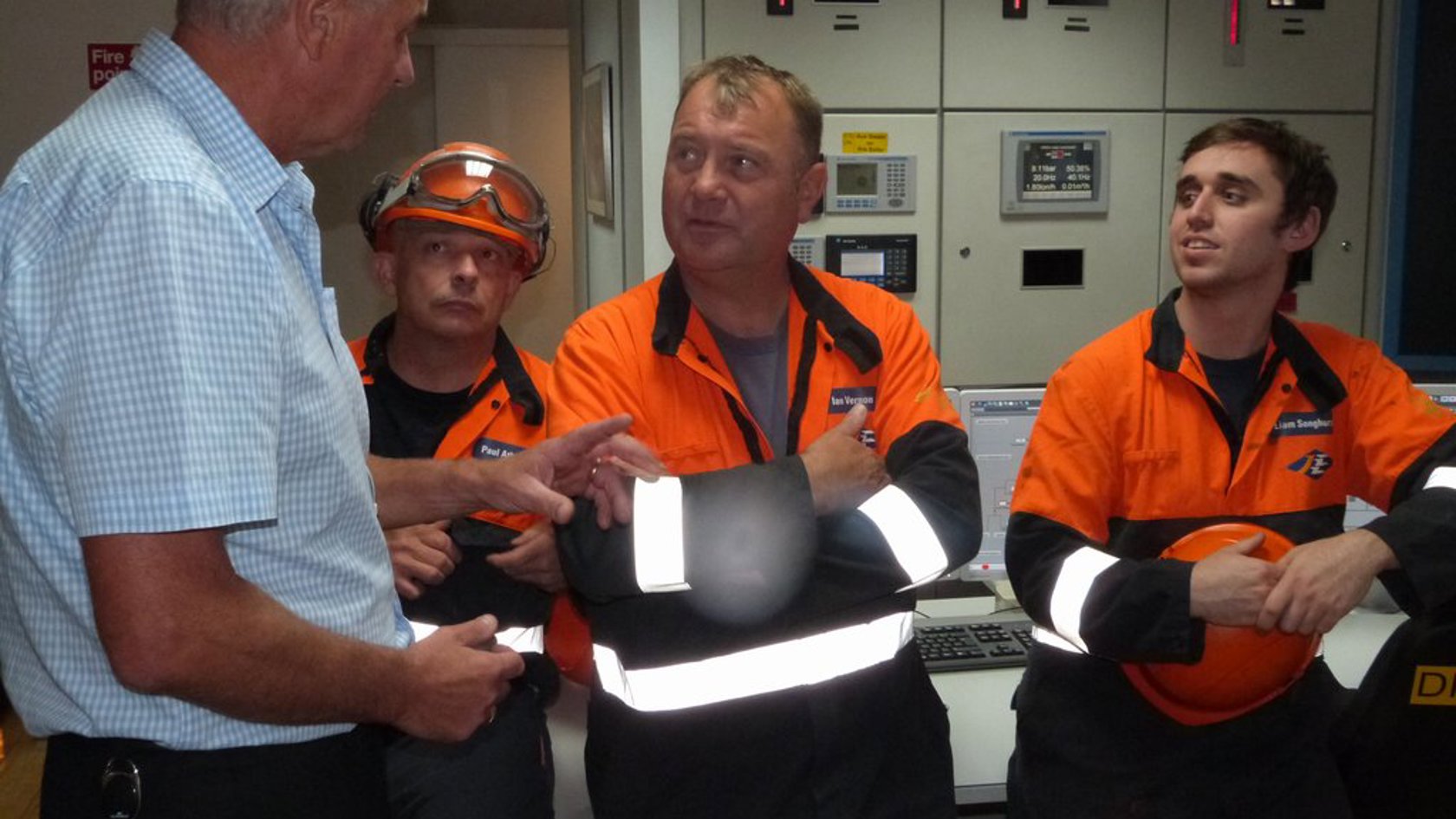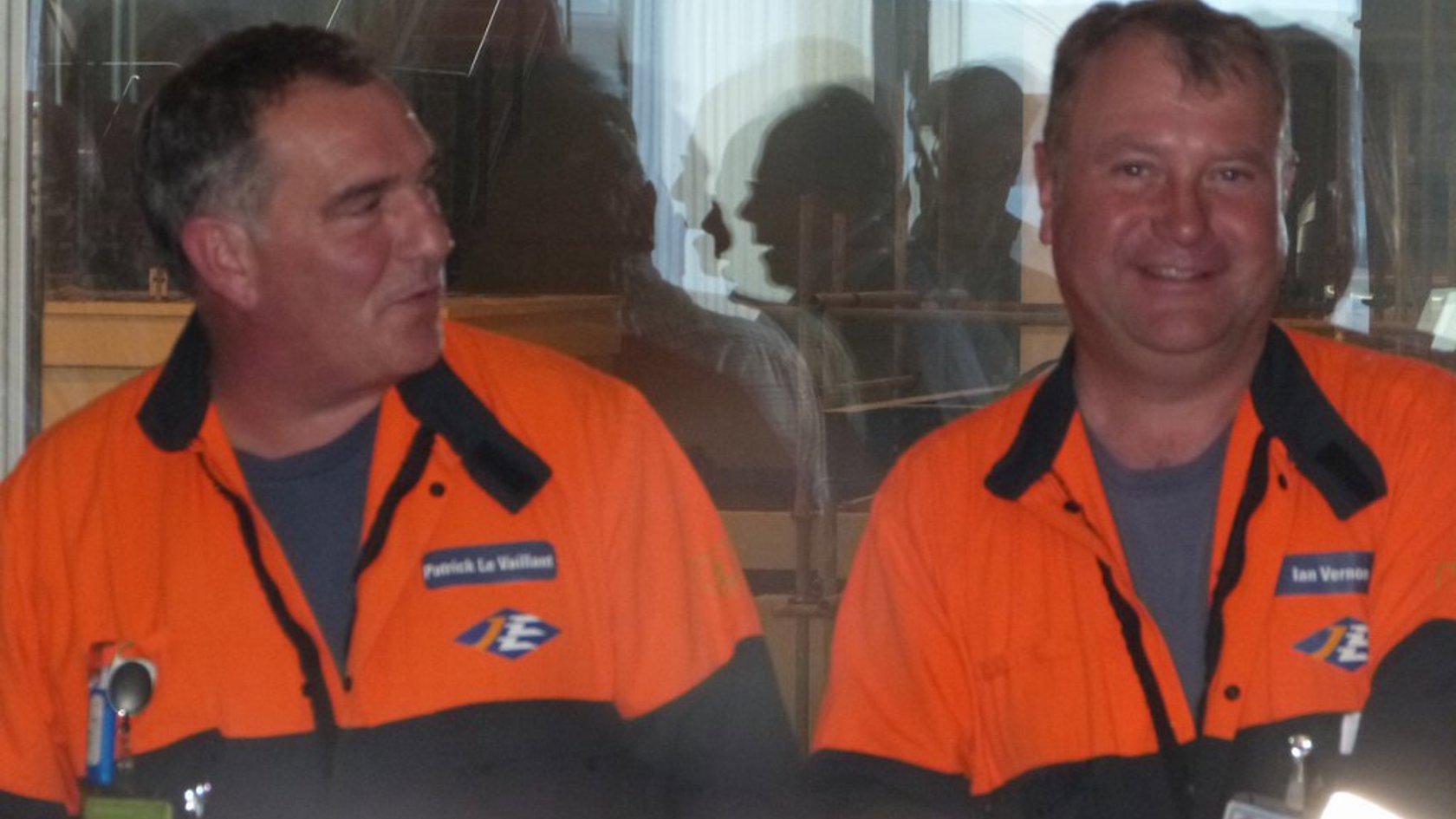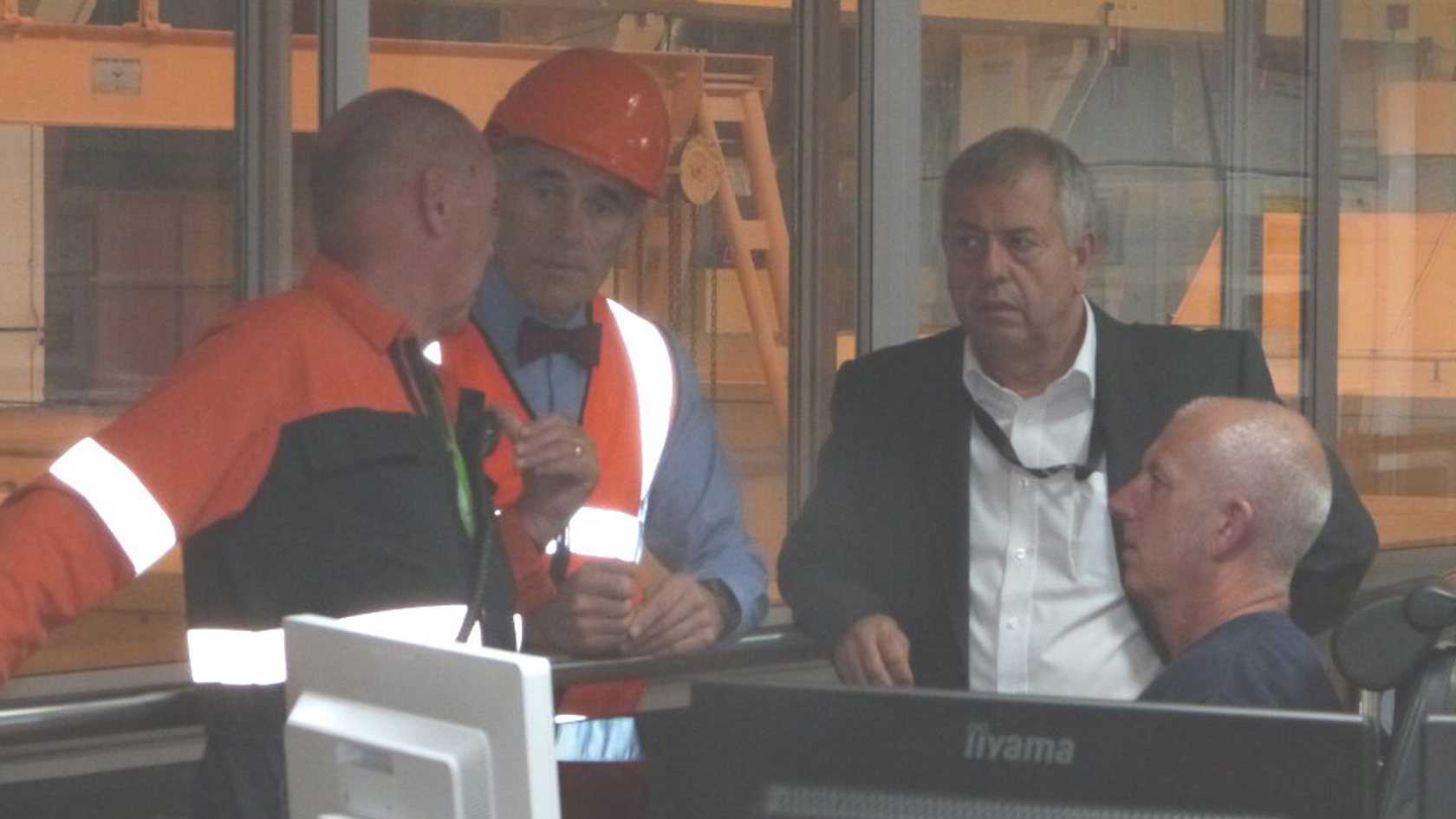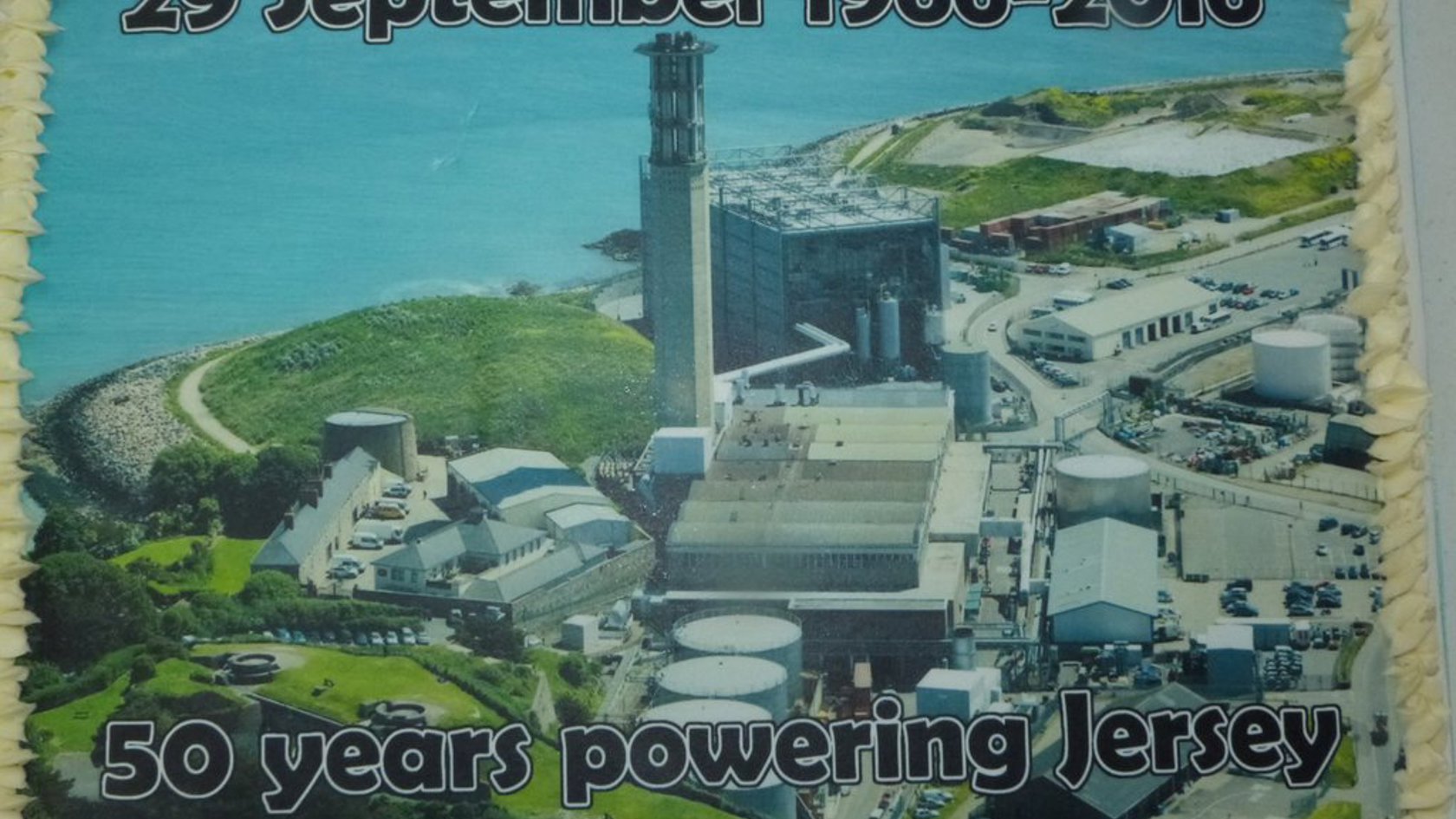We today marked 50 years since the first units of electricity were generated at La Collette Power Station with a small celebration and a rather large cake enjoyed by current Power Station staff, including JE’s longest serving employee, John Smith (43 years), and several pensioners who worked in the Power Station during its early days. They included Ken Baudains, (pictured above with JE CEO Chris Ambler) one of the three shift engineers who signed the ledger on the first day of generation, 29 September, 1966.
Chris Ambler said: ‘Today is another important milestone in our long proud history of serving our Island community. Our hand written ledgers of the time show that the first units of electricity were generated from La Collette on 29 September 1966 and here we have one of the men who were here that day.

‘From humble beginnings at Albert Pier in 1925, to Queen’s Road Power Station in 1934, to La Collette in 1966, we have continued to meet the ever increasing demand for reliable supplies of electricity which is so vital for economic prosperity and personal well-being. And the Company has done it cost effectively, prudently and with responsibility.’
‘Although we are now a major importer of decarbonised energy from France, La Collette still provides a vital strategic service to “keep the lights on”. Put simply, it is our “lifeboat” when things go wrong and like any good ship it is important that we invest in skilled engineers, technicians and support staff to keep her available for service 24/7 x 365 days a year.’

Built in 1965, La Collette became the centre of the Island’s electricity generation and distribution using a combination of four Mirrlees diesel engines, a GEC 30MW steam turbine and two John Thompson 15MW heavy fuel oil-fired boilers. But it wasn’t always like that.

Jersey’s first electricity came from installations of private plant as early as 1883 but it was three decades later before a public supply became possible with the establishment of The Jersey Electricity Company in April 1924. The Company soon outgrew its first ‘generation station’ (above) opened in 1925 at the end of Albert Pier, next to the former abattoir, Queen’s Road Power Station (below) (now the Powerhouse) was officially opened in May 1934.

Expansion was cut short by the German Occupation but in three years from 1952 to 1955 unit sales increased by a third from 24 million units to 32 million (just 5% of current annual unit sales) and customers increased by 8% from 16,814 to 18,190, many benefiting from the introduction of cheaper tariffs for water heating and off-peak storage heating. By 1962, unit sales topped 100 million (today it is over six times that at 625 million) and maximum demand had doubled from 15MW to 33MW in six years – today’s peak demand stands 161MW recorded on 2 February 2012.

The decision to build La Collette was taken in 1963. As the ledger shows La Collette was operational in September 1966. Two months later the first stage of the Station was complete and two steam boilers (with turbine) were producing 30MW. Two further boilers and a second steam turbine were later commissioned bringing output to 60MW. By 1970, all operational staff had been withdrawn from Queen’s Road and the four 5MW Mirrlees diesel sets relocated to La Collette (above), bringing capacity there to 80MW. It was extended to accommodate another 30MW turbine and was officially opened in November 1973 (below).

Today around 95% of electricity used in Jersey is imported through two undersea supply cables from France, Normandie 2 and Normandie 3. A third, Normandie 1, is nearing completion but Jersey Electricity continues to invest in La Collette as a key asset in its restoration plan. A ‘black start’ Sulzer diesel generator is currently being installed and when commissioned, itwill be started using compressed air enabling the Company to restore full supplies to the Power Station and all its ancillary controls, in the event of a complete “black-out”.


